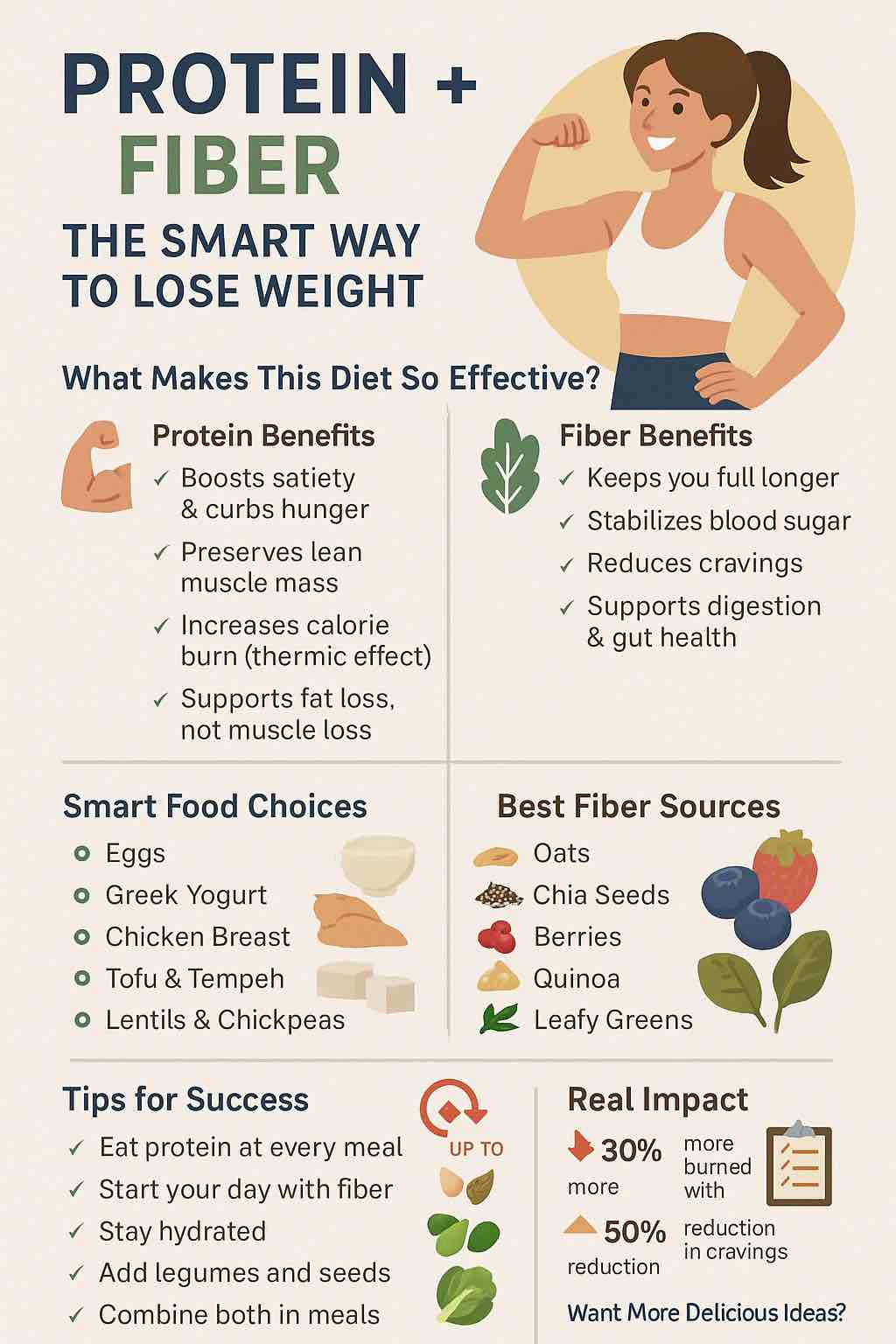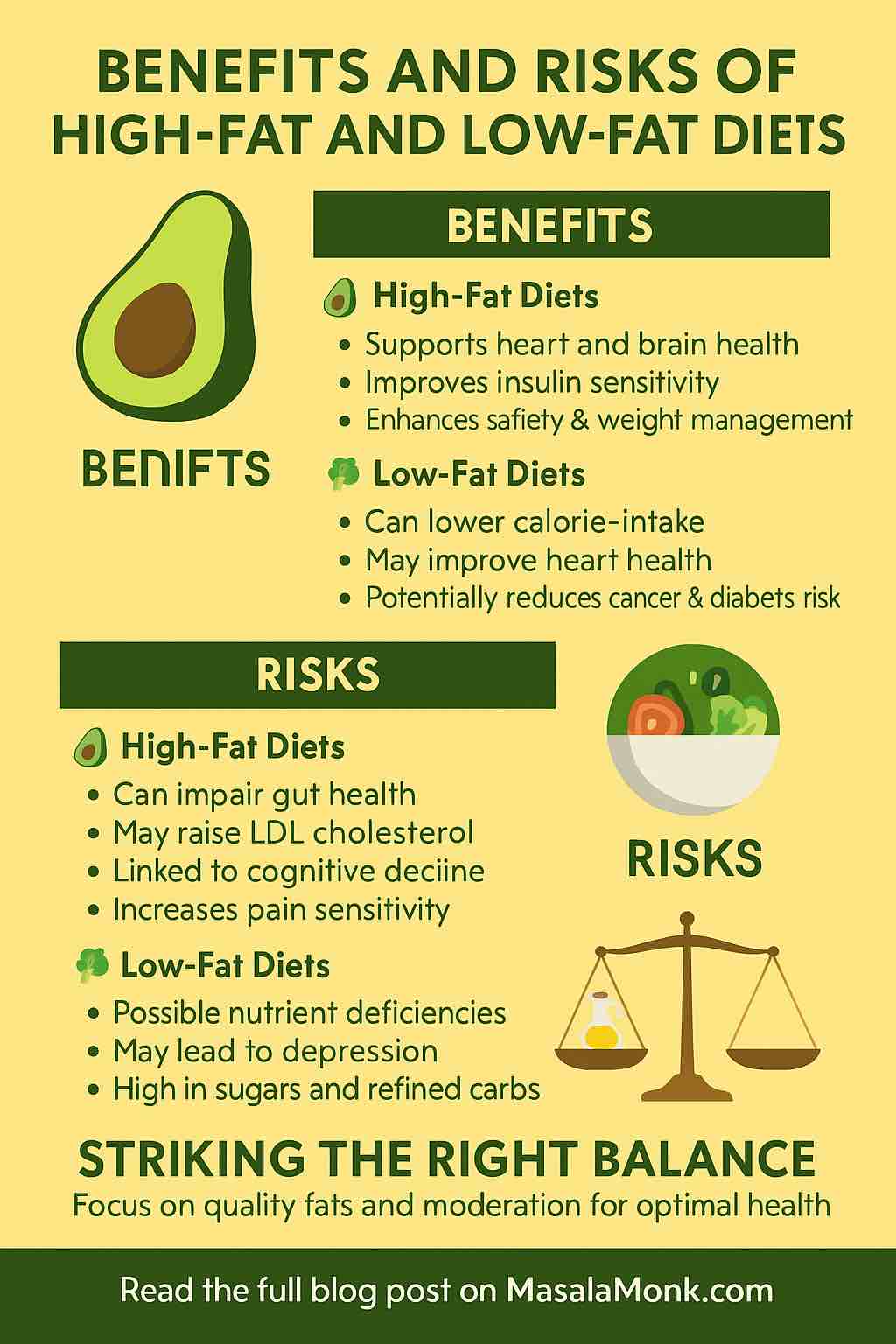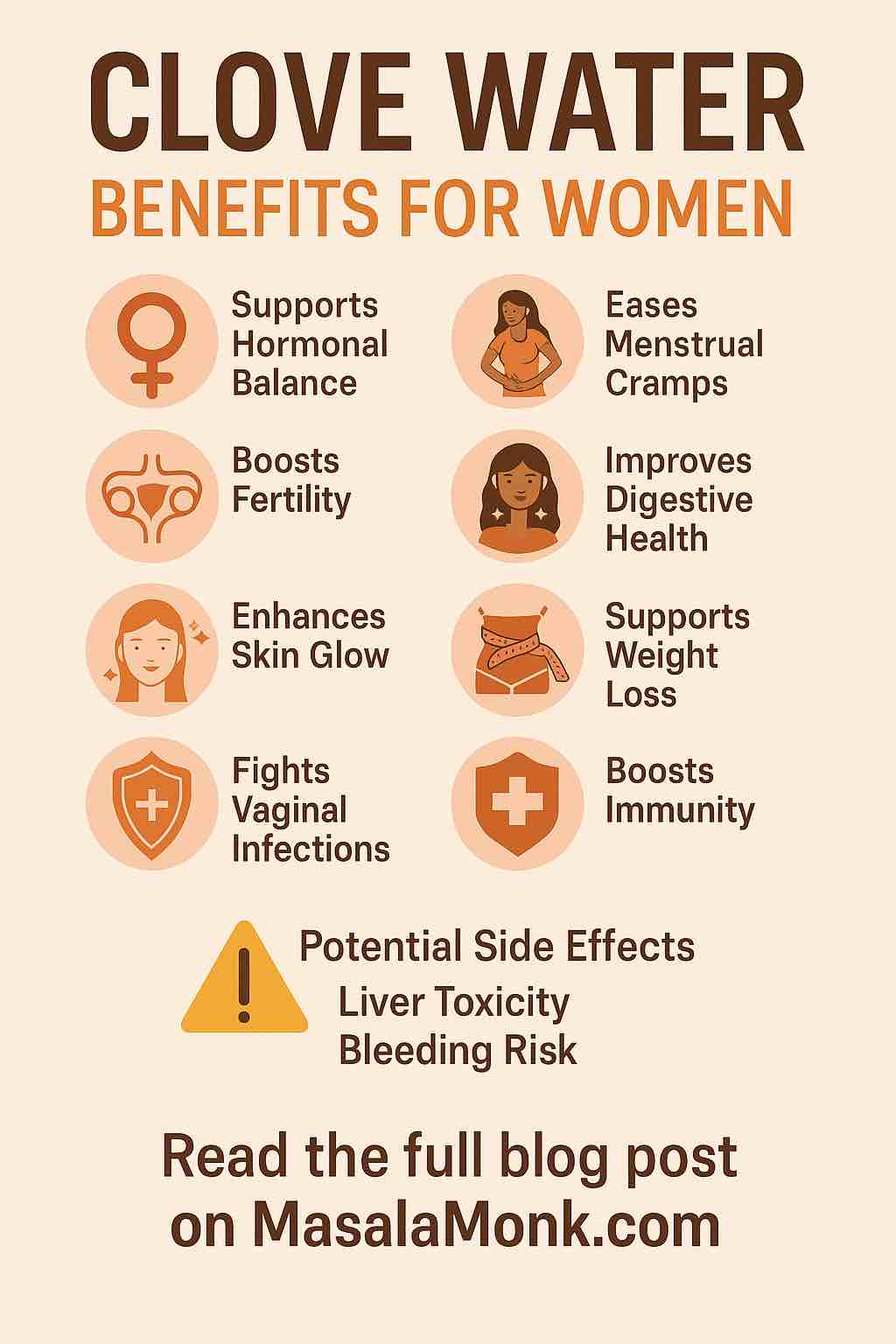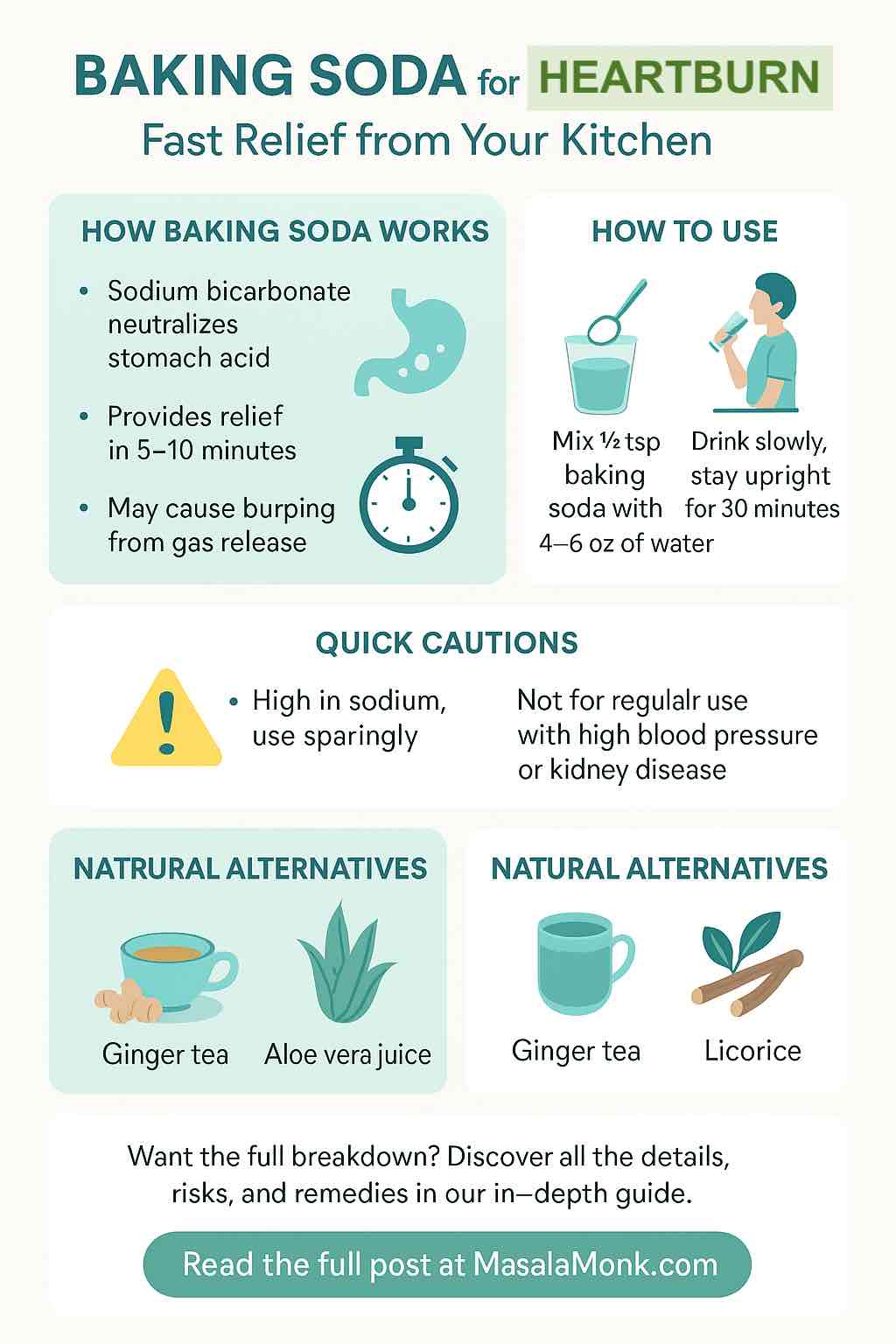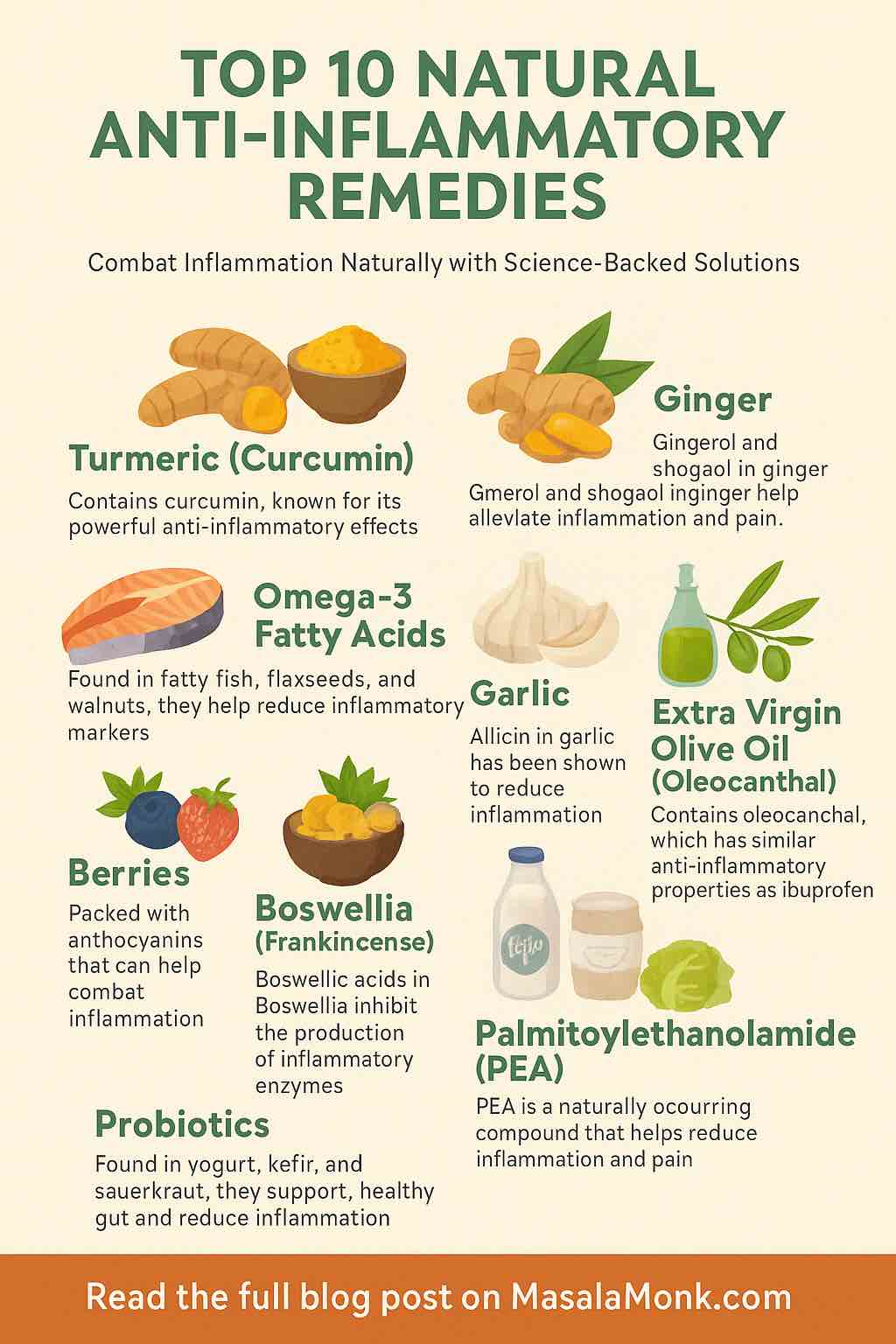
Inflammation is your body’s natural response to injury or infection—a vital part of healing. But when inflammation becomes chronic, it can quietly damage your tissues and organs, contributing to diseases such as arthritis, heart disease, diabetes, and even certain cancers.
Thankfully, nature provides an array of potent remedies that can help tame inflammation without the side effects often associated with pharmaceutical drugs. In this post, we explore the top 10 natural anti-inflammatory remedies supported by solid scientific research — foods, herbs, and supplements that you can incorporate into your daily routine to promote wellness and reduce inflammation.
What Is Inflammation and Why Should You Care?
Inflammation is your immune system’s alarm bell, signaling your body to heal and fight harmful invaders like bacteria and viruses. It manifests as redness, swelling, warmth, and pain. Acute inflammation is beneficial and short-lived. But chronic inflammation — lasting weeks, months, or years — can damage healthy cells and is linked to many chronic diseases.
Common signs of chronic inflammation include fatigue, body pain, digestive issues, and skin problems. Lifestyle factors such as poor diet, stress, lack of exercise, and environmental toxins can trigger or worsen chronic inflammation.
The good news? You have control over many of these factors. Incorporating natural anti-inflammatory remedies can be a powerful step toward better health.
Top 10 Natural Anti-Inflammatory Remedies
1. Turmeric (Curcumin)
Turmeric, the vibrant yellow spice commonly used in Indian cooking, contains the powerful compound curcumin. Curcumin has potent anti-inflammatory and antioxidant properties that can help suppress molecules that cause inflammation.
- Scientific Evidence: Numerous studies show curcumin’s effectiveness in reducing symptoms of arthritis, inflammatory bowel disease, and psoriasis. Its impact is comparable to some anti-inflammatory drugs, without the side effects.
- How to Use: Add turmeric powder to curries, soups, or smoothies. For better absorption, consume turmeric with black pepper or fats like olive oil.
2. Ginger
Ginger is a fragrant root with a long history of medicinal use. It contains gingerols and shogaols, which block inflammatory pathways and reduce oxidative stress.
- Scientific Evidence: Research indicates ginger alleviates muscle pain, osteoarthritis symptoms, and may reduce inflammation in the digestive tract.
- How to Use: Brew ginger tea, add fresh ginger to meals, or take ginger supplements.
3. Omega-3 Fatty Acids
Omega-3s are essential fats found in fatty fish (salmon, mackerel), flaxseeds, walnuts, and chia seeds. They balance pro-inflammatory omega-6 fats and reduce levels of inflammatory markers like C-reactive protein.
- Scientific Evidence: Omega-3 supplementation is linked with lowered risk of cardiovascular disease, rheumatoid arthritis, and improved brain health.
- How to Use: Eat fatty fish twice weekly or consider a high-quality fish oil supplement.
4. Green Tea (EGCG)
Green tea is rich in antioxidants, especially epigallocatechin gallate (EGCG), which helps reduce inflammation and protect cells from damage.
- Scientific Evidence: Studies show green tea may reduce the risk of chronic diseases like heart disease, cancer, and neurodegenerative disorders.
- How to Use: Drink 2–3 cups of green tea daily for sustained benefits.
5. Garlic (Allicin)
Garlic has sulfur compounds such as allicin that modulate immune responses and reduce inflammation.
- Scientific Evidence: Garlic consumption is associated with lowered inflammatory markers and may support cardiovascular health.
- How to Use: Add raw or cooked garlic to your meals regularly.
6. Extra Virgin Olive Oil (Oleocanthal)
Extra virgin olive oil contains oleocanthal, a compound with anti-inflammatory effects similar to ibuprofen.
- Scientific Evidence: Studies demonstrate olive oil’s ability to reduce inflammatory markers and protect against heart disease.
- How to Use: Use as your primary cooking oil or drizzle over salads and vegetables.
7. Berries (Anthocyanins)
Berries such as blueberries, strawberries, and blackberries are loaded with anthocyanins—antioxidants that reduce oxidative stress and inflammation.
- Scientific Evidence: Regular berry consumption is linked to lower inflammation and improved heart and brain health.
- How to Use: Add fresh or frozen berries to smoothies, yogurt, or oatmeal.
8. Boswellia (Frankincense)
Boswellia serrata, known as frankincense, has been used in traditional medicine for centuries. Its boswellic acids inhibit enzymes that promote inflammation.
- Scientific Evidence: Clinical trials show boswellia helps reduce joint pain and improve mobility in arthritis patients.
- How to Use: Available as capsules or extracts; follow dosing instructions on supplements.
9. Probiotics
Probiotics are beneficial bacteria that support a healthy gut microbiome, which in turn helps regulate systemic inflammation.
- Scientific Evidence: Studies indicate probiotics can reduce gut inflammation and improve symptoms of inflammatory bowel diseases.
- How to Use: Consume yogurt, kefir, sauerkraut, kimchi, or probiotic supplements regularly.
10. Palmitoylethanolamide (PEA)
PEA is a fatty acid naturally produced in the body that modulates pain and inflammation.
- Scientific Evidence: PEA supplementation has been shown to reduce chronic pain and inflammatory skin conditions.
- How to Use: Available as supplements; consult healthcare providers for appropriate use.
How to Incorporate These Remedies Into Your Daily Life
- Start Your Day with a Turmeric Latte: Combine turmeric, black pepper, cinnamon, and your choice of milk for a soothing anti-inflammatory drink.
- Snack on Berries: Swap out sugary snacks for a handful of fresh or frozen berries.
- Cook with Olive Oil and Garlic: These kitchen staples boost flavor and provide anti-inflammatory benefits.
- Sip Green Tea: Replace sugary beverages with green tea throughout the day.
- Add Omega-3 Rich Foods: Include fatty fish in meals or take supplements if needed.
- Enjoy Probiotic-Rich Foods: Try fermented foods like yogurt, kefir, or kimchi.
- Consider Supplements: If appropriate, add turmeric extracts, boswellia, ginger, or PEA supplements after consulting your healthcare provider.
The Bottom Line: Embrace Nature’s Pharmacy
Chronic inflammation is a silent threat but can often be managed with lifestyle and dietary changes. The natural remedies listed here have stood the test of time and scientific scrutiny. By integrating them into your routine, you support your body’s innate ability to heal and thrive.
Remember, no single remedy is a magic bullet. A holistic approach combining a balanced diet, regular physical activity, stress management, and adequate sleep will provide the best results.
References
- Healthline: Turmeric and its anti-inflammatory properties
- National Institutes of Health: Omega-3 fatty acids and inflammation
- PubMed Central: Effects of ginger on inflammation
- Various clinical trials on Boswellia and PEA
FAQs
1. What causes chronic inflammation?
Chronic inflammation can be caused by persistent infections, autoimmune disorders, poor diet, stress, obesity, and exposure to environmental toxins. Unlike acute inflammation, which heals injuries, chronic inflammation can damage healthy tissues over time.
2. How quickly can natural remedies reduce inflammation?
The time varies depending on the individual and severity of inflammation. Some people may notice improvements within weeks, while others may require months of consistent use alongside lifestyle changes.
3. Can turmeric interact with medications?
Yes, turmeric may interact with blood thinners, diabetes medications, and stomach acid reducers. It’s important to consult your healthcare provider before starting turmeric supplements.
4. Are omega-3 supplements better than eating fish?
Whole foods like fatty fish provide additional nutrients beyond omega-3s, but supplements are useful if you don’t eat fish regularly. Choose high-quality fish oil supplements to avoid contaminants.
5. Is ginger safe for daily consumption?
Ginger is generally safe in culinary amounts. For medicinal doses, it’s best to consult a healthcare professional, especially if you’re pregnant or have bleeding disorders.
6. How much green tea should I drink for anti-inflammatory benefits?
Drinking 2 to 3 cups of green tea per day is typically enough to obtain its anti-inflammatory antioxidants.
7. What are the best probiotic foods for reducing inflammation?
Yogurt with live cultures, kefir, sauerkraut, kimchi, miso, and kombucha are excellent probiotic-rich foods that help support gut health and reduce inflammation.
8. Can extra virgin olive oil replace other cooking oils?
Yes, extra virgin olive oil is a heart-healthy choice with anti-inflammatory properties. Use it as your primary cooking oil or as a dressing for salads and vegetables.
9. Are boswellia supplements effective for arthritis?
Clinical studies have shown boswellia extracts can reduce joint pain and improve function in people with arthritis, making it a promising natural remedy.
10. Should I take multiple anti-inflammatory supplements at once?
It’s best to consult with a healthcare provider before combining supplements, as some may interact or have overlapping effects. A balanced diet with natural sources is usually preferable.

